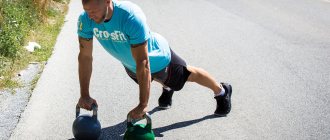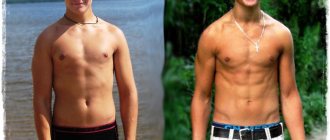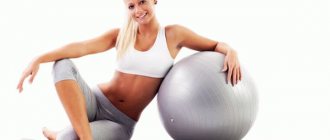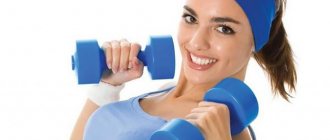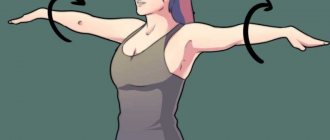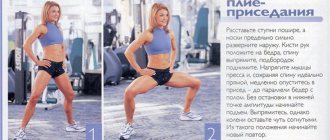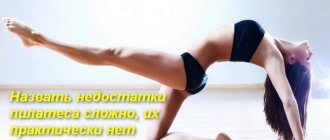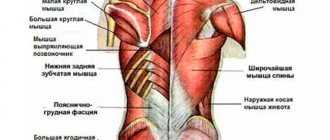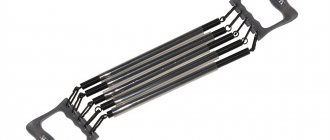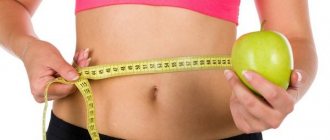A pumped, athletic body is necessary not only to meet the momentary canons of beauty - it is, first of all, an indicator of the physical health of the body, its capabilities and strength. The muscular frame, the center of which is the core, is involved in every human movement, supports the position of the internal organs and ensures their performance. By developing this complex, you can protect yourself from stress-related injuries, make your posture straight, your movements coordinated, and your body strong and toned.
What do the core muscles mean in human anatomy, what are the features of their structure and physiology? Basic information will help you correctly assess the degree of development of your body, build an optimal training program and reach a new level of physical fitness.
Core muscles: what are they and where are they located? Anatomical certificate
The core (from the English “center”) is represented by a group of muscles located mainly in the middle section, in the area of the spinal column and hip joints. Fibers located at different depths are conventionally divided into three layers:
- The external muscles include the latissimus dorsi, trapezius, gluteal, adductor, rectus and external oblique abdominal muscles.
- The second layer is represented by the infraspinatus muscle fibers, internal oblique abdominal muscles and erector spinae.
- The third layer, lying deep below the first two, consists of the iliopsoas and multifidus muscles, diaphragm, quadratus lumborum, pelvic floor and transverse abdominis muscles.
Such diverse anatomy explains the complex technique of training the core muscles: contrary to popular belief, they cannot be pumped up by doing hundreds of twists and lifts of the torso. Of course, this will make the abdominal muscles stronger, and perhaps the stomach will acquire a beautiful shape, but this effect will have nothing to do with strengthening the muscle frame.
What are the core muscles responsible for?
Unlike most muscle fibers, the core is not an independent source of movement - this group is largely responsible for the correct distribution of force impulses. Based on this, its key functions are determined:
- The core acts as a stabilizer of the body in space, especially during heavy loads. Well-developed muscles of this complex protect the spinal column from injuries and hernias, maintain balance and flexibility.
- Stabilization of the core muscles is the basis for the correct shape of the chest, beautiful posture and toned silhouette, distinct relief of the abdomen and buttocks.
- The deep core muscles help position the internal organs in an anatomically correct position, prevent their displacement, and therefore ensure the full functionality of all body systems.
- Strengthening the core muscles is especially important for women. The pumped fibers support the internal organs of the reproductive system, which is very important during pregnancy, childbirth and subsequent recovery.
- A developed core allows you to easily perform exercises that require “explosive” strength: jumping, skipping, hitting, etc.
- Weak core muscles are unable to support complexly coordinated movements. They limit the trajectory of movement and functionality of the body, which is especially important in gymnastics and yoga, which require flexibility and coordination.

The core is involved to one degree or another in almost every movement, helping to stabilize the back, pelvis, hips and other parts of the body, distributing the load between muscles and preventing injuries to the musculoskeletal system. Therefore, even if you do not play sports professionally and do not carry heavy weights, it is worth regularly doing at least basic core muscle exercises at home. This will help train poorly developed muscles, and also make the body stronger and healthier.
How to assess core muscle development? Home test for beginners
If you have been actively involved in sports for a long time and monitor the condition of your body, this does not mean that your core is in optimal condition. A special test for core muscle strength, including a functional assessment of movements, will help measure the degree of its development. A system of seven different exercises, developed by American specialists G. Cook and L. Burton, will allow you to assess your basic athletic level and subsequently correctly create a set of exercises for developing the core muscles that you can do.
General training recommendations for girls and women
The core muscles are located in three large areas of the body, which means it is recommended to train them in strict accordance with the basic rules formulated by fitness trainers for girls and women playing sports.
These are the following rules:
- Before the main part of the training, it is necessary to perform a warm-up set , the duration of which should be no more than 5-7 minutes. If an athlete has no contraindications, she should use cardio exercises as a warm-up. They will not only prepare the body for further sports, but will also increase the speed of blood flow, due to which the cardiovascular system will adequately supply the body with oxygen, increasing the athlete’s endurance during exercise;
- after the main part of the training, it is necessary to do a cool-down (it will help restore the heart rate and adjust the frequency and depth of breathing);
- during sports, it is recommended to maintain a drinking regime (otherwise, dehydration may occur, which sometimes provokes fainting or sudden jumps in blood pressure);
- The time for playing sports must be selected taking into account the characteristics of the body - biological rhythms (the time of exercise does not have any effect on the effectiveness of the training).
Stability test
To determine if you're ready to train hard, take a simple test that will clearly demonstrate your core condition. To do this, just do a push-up, keeping your body perfectly straight. The chest and stomach should be lifted off the floor at the same time, without bending the lower back. A light tube or stick, which should be placed on your back along the spine, will help you check the correct position.
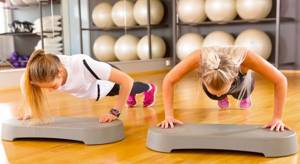
If the exercise seems easy, congratulations - your muscle frame is in great shape. The difficulties that arise, on the contrary, will demonstrate the weakness of the core muscles and the need for scrupulous work on oneself.
Determination of static strength
Four more core exercises involve different types of planks. The straight plank on the forearms and arms should be held for at least 90 seconds, the side plank for one minute on each side. In this case, the position of the body should be perfectly level.
If the test did not cause any difficulties, you can safely work with large masses and train at full strength - your body is 100% ready for the load. And if the specified interval is not maintained, you will first have to develop basic skills by performing simple exercises to strengthen the core muscles.
Choosing clothes for classes

Clothes for training should be light, not restrict movement and breathable. A sports bra, tank top and shorts will do. You can work out barefoot at home, unless it’s on exercise equipment, such as an elliptical, but when going to the gym, it’s best to buy light and fairly stable shoes that can protect your feet from mechanical damage.
You may need a training mat if you do a lot of floor exercises to improve traction, increase comfort, and keep your spine stable.

Dynamic core strength
Two exercises on the horizontal bar will help determine the dynamic strength of the muscle frame: raising the knees to chest level and/or legs to the crossbar (5 repetitions each). Hands should be shoulder-width apart, and movements should be fully controlled, amplitude and smooth.
These same exercises are part of a complex for working the core muscles, so if they cause difficulties, you can repeat them daily, increasing the number of approaches - this will strengthen the body, make it more obedient and flexible.
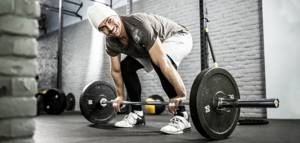
Deadlift
To evaluate the strength and stability of your back and posterior core muscles, you should perform a classic deadlift in the correct position. The optimal weight for the exercise can be determined from the table below.
Men:
| Weight | Physical level Minimum training | Physical level training Medium | Physical level Advanced training |
| 56 | 47,5 | 100 | 145 |
| 60 | 50 | 110 | 155 |
| 67 | 57,5 | 122,5 | 172,5 |
| 75 | 62,5 | 135 | 185 |
| 82 | 67,5 | 142,5 | 200 |
| 90 | 70 | 152,5 | 207,5 |
| 100 | 75 | 160 | 217,5 |
| 110 | 77,5 | 165 | 222,5 |
| 125 | 80 | 170 | 227,5 |
| 145 | 82,5 | 172,5 | 230 |
| 145+ | 85 | 177,5 | 232,5 |
Women:
| Weight | Physical level Minimum training | Physical level training Medium | Physical level Advanced training |
| 48 | 27,5 | 60 | 85 |
| 52 | 30 | 62,5 | 90 |
| 56 | 32,5 | 67,5 | 95 |
| 60 | 35 | 72,5 | 100 |
| 67 | 37,5 | 80 | 110 |
| 75 | 40 | 85 | 117,5 |
| 82 | 42,5 | 92,5 | 125 |
| 90 | 45 | 97,5 | 130 |
| 90+ | 50 | 105 | 137,5 |
"Dead Bug"

The Dead Bug is a static exercise that targets the abdominal, back and thigh muscles. Doing it regularly will make it much easier to do other exercises that involve moving your legs and arms while keeping your abdominal and back muscles stationary but engaged.
Technique:
- Lie on the floor, bend your knees and lift them so that a right angle forms between your knees and hips.
- Extend your arms towards the ceiling.
- Reach your left leg with your right hand. Try not to lift your lower back off the floor.
- Pause and return to the starting position.
- Repeat with the other arm and leg.
Do the required number of repetitions.
see also
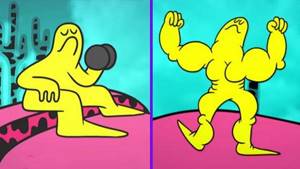
The Real Reasons Why Muscles Get Tired During Exercise
Your own trainer: the best core exercises
You don't need complicated techniques or expensive equipment to get your body in shape. Full strengthening of the core muscles is easy to do at home, working exclusively with your own weight. But before you start leveling up, you should carefully study the key principles of self-study - they will prevent possible mistakes and make training more effective:
- A set of exercises for the core muscles should be complicated gradually - a beginner will not physically cope with the same loads as an advanced practitioner.
- Each complex should be performed in several approaches with a short interval for recovery. At the end of classes, the muscles should “burn” a little - this means that the number of repetitions and the degree of load are optimal.
- It is important to monitor not only the number of approaches, but also the quality of their implementation - sloppy movements will not lead to the desired result.
- Even if you really want to get a flat stomach with the coveted six-pack, you shouldn’t focus only on pumping up your abs. During classes, different muscle groups should be used - this way the training will be many times more effective.
- To avoid addiction, it is necessary to change the set of exercises to strengthen the core muscles at least once every month and a half. This approach will allow you to use absolutely all groups of fibers, which means significantly increasing the physical strength, agility and endurance of the body.
- Do not neglect warm-up and cool-down: the first will warm up the muscle fibers, and the second will ensure a smooth decrease in load.
- Alternate between different sets without overloading each muscle group. By allowing time for recovery, you will achieve better results.

While you know how to strengthen your core through exercise, don't forget the importance of lifestyle changes. To make your workouts more effective, you will have to revise your diet by adding protein instead of “fast” carbohydrates. In addition, you should constantly monitor your posture, maintain the correct position of the body and shoulders - this will allow you to achieve noticeable results faster.
"Cot"

The “clamshell” will help strengthen the muscles of the hips and pelvic floor even for those who are still new to the world of fitness. The exercise evenly distributes the load between the muscles of the inner and outer thighs.
Technique:
- Lie on your side with one leg crossed over the other. Bend your knees at an angle of 45 degrees.
- Place your head on your forearm.
- Pull your stomach in, as if pulling your navel towards your spine.
- Keeping your feet touching, lift the knee of your top leg as high as possible. Try to make the movement only with your knee, without rotating your pelvis. Your bottom leg should not leave the floor.
- At the top, pause for one count, then return your leg to the starting position.
Repeat.
How to work your core muscles? Basic exercises in various styles
The core includes dozens of different muscle fibers, so it is impossible to pump it up using any one specific technique - you will have to constantly combine exercises, change approaches and supplement your training with new skills. To achieve tangible results in an extremely short time, try choosing a combination of basic pumping methods:
- Side and straight planks on the elbows and arms will strengthen the torso and increase the static strength of the core. Gradually increase the time interval and the number of approaches, and you yourself will not notice how the position will not cause difficulties.
- Twisting, lifting the torso and legs is a universal way to pump up the abs, which also has a positive effect on the condition of the core.
- Side bends will make your waist thinner by pumping up the oblique abdominal muscles.
- The glute bridge and its various variations will strengthen the back muscles, hips and pelvis.
- Straight-back push-ups are a great option for increasing body stability in space.
- Rope climbing will strengthen your upper torso.
Another great way to help pump up your core muscles is yoga. Correctly performed asanas will improve the condition of the torso, make the body more flexible and resilient. Positions that include balance on the arms or one leg, inverted asanas and the smooth dynamics inherent in yoga have a positive effect on the strength and durability of muscle fibers of various groups. During the exercises, even deep-seated muscles are used, which are rarely involved in classical sports exercises.
"Bird Dog"
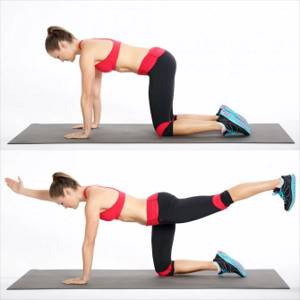
This exercise comes from yoga. It involves almost the entire body and is aimed at finding balance. According to certified trainer and Aaptiv (fitness app) head instructor Jaime McPhaden, bird dog is a healthy, low-impact exercise that helps improve stability and coordination without putting too much pressure on your joints.
Technique:
- Get on all fours, knees at a 90-degree angle, hands under your shoulders. Remember to keep your abs tense and your back straight.
- Extend your right arm straight out in front of you and at the same time move your left leg back.
- Complete the movement by connecting your right elbow with your left knee under your body. Return to the starting position and repeat the same with your left arm and right leg.
Do the required number of repetitions.
see also
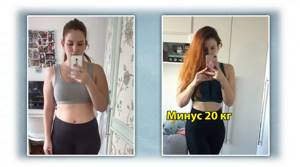
17 real weight loss tips from people who have lost more than 20 kg
